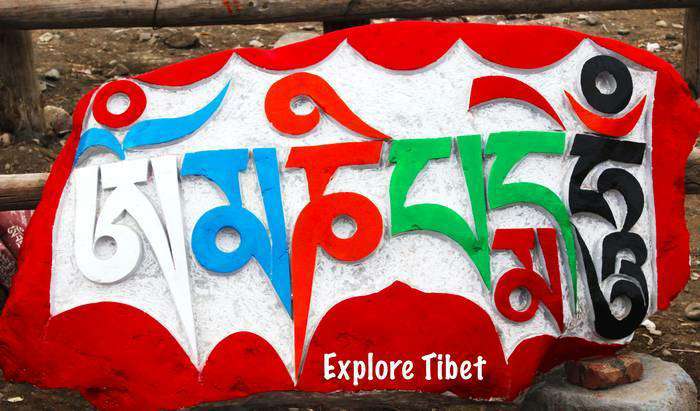
The Gyanak Mani temple is located at Senzi town of Yushu Tibetan Autonomous Prefecture, Qinghai Province and it’s about 6 kilometres from the centre of the Yushu town. It is in a valley surround by hills. It takes around ten to fifteen minutes’ drive from Yushu town. It is a place where Mani Stone Field is located which has an enormous collection of carved prayer stones depicting Buddha sculptures and mantras.
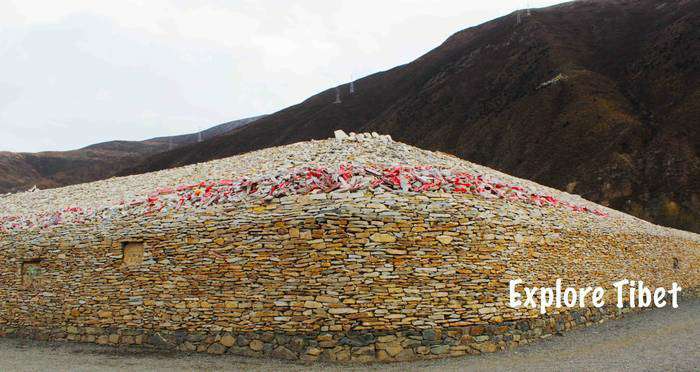
There are over two to three million prayer stones stacked on the top of each other spread across a square kilometre and reaching a height of three meters. The compound is in a rectangle shape with hundred meters in length and around fifty-five meters in breadth. It is said to be the world largest Mani stones field. As the Buddhist followers will drop a piece of Mani stone to the mound every time when they pass a Mani stone mound. That equals to praying or murmuring sutra texts. Thus, the Mani mounds are growing taller every year. There are a big temple hall and some small temple in the Mani stones field. There is also some big Mani wheel halls and butter lamp hall. There are some statues crafted on the big stones and also some stupas around the compound. These stone structures are a compilation intricately carved stone tablets, most with the inscription Om Mani Padme Hum which loosely translates as the Hail to the jewel in the lotus, but it has deep meaning even though it has only six syllables.
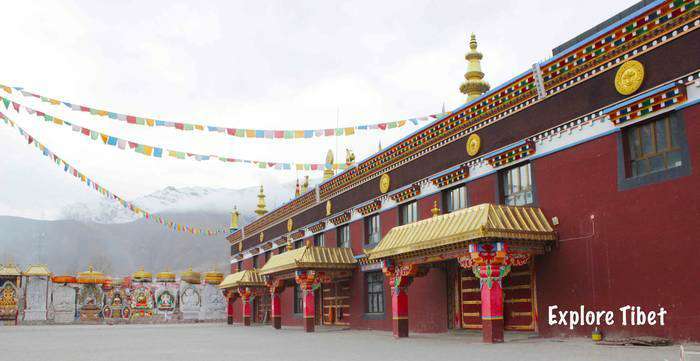
It said that the Mani stone field first mounded by the abbot of Jegu Monastery, but later it has become bigger and bigger every year. The Jegu monastery is the follower of Sakya sect of Tibetan Buddhism and its main monastery is located on the hill of Yushu town. Tens of thousands of the mound are particularly precious which are engraved with words of the law, calendar calculation, art theory, sutra texts and Buddha carvings. There is another way of interpretation about Gyanak Mani Temple, it is the place where the first Chinese Buddhist monk Dangsing Lama took rest for some day while he was travelling from China to India with his three disciples to receive teaching form, Indian Buddhist masters. The Gyanak Mani means Chinese Mani, where Mani is the mantra of Buddha of compassion and also known as Chenrigze in Tibetan. It is the universal mantra, Om Mani Padme Hum and inscribed on these smooth stone plates, pebbles and rocks. Images of deities and great adepts and sutra texts are also common themes.
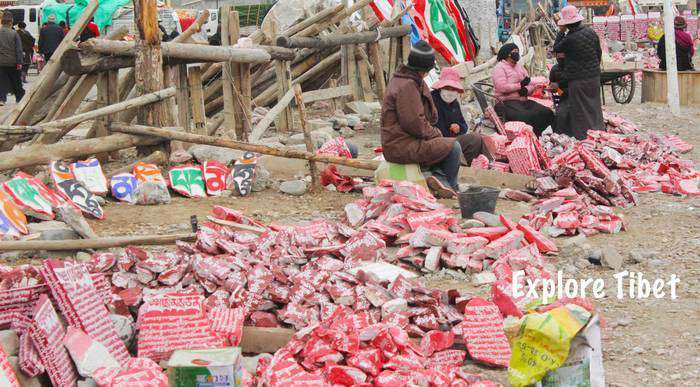
Followers will drop a piece of Mani stone to the mound every time when they pass a Mani stone mound. That equals to praying or murmuring sutra texts. Thus, the Mani mounds are growing taller every year. There comes in different colour, different Tibetan calligraphy, shapes and different images engraved. In Tibetan areas, there are so many small Mani stones piles and also on the huge rocks. They showcase the artistic charm of Tibetan culture and also means of offering to the god and goddess. They also are known as Mandhe in Tibetan which means the Sanskrit mandala. The Mani stones are regarded sacred as the sacrifice to the Buddha. In general, the vast land of Tibet with sparse population, Mani stone mounds become the prayer halls and shrines for the local. Among the various kinds of Tibetan folk carvings, the most popular is Mani stone carving due to its vast subject matter and rich contents which have a unique Tibetan colour.
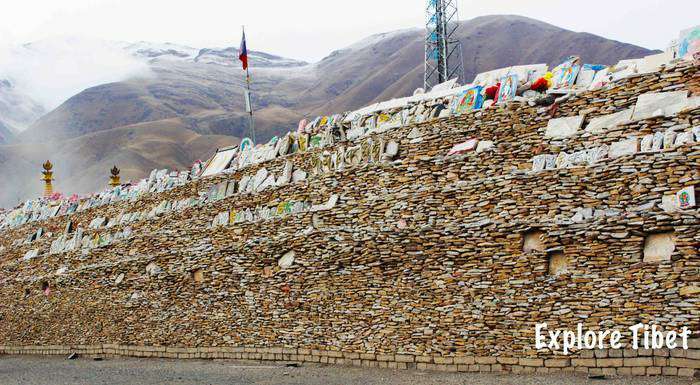
The Gyanak Mani compound is surrounded by shops, guest houses and restaurants. It is located next to the main road of the town. There are so many Mani stone handicraftsmen next to the footpath. During the special occasion like full moon day of Tibetan calendar of every month, many people buy those Mani crafted stones and piled up to the field. The main contents of the stones are Buddha paintings, incantations, Buddhist mottos and other mantras including Mani. They also craved sutras from other countries like Indian sutras.
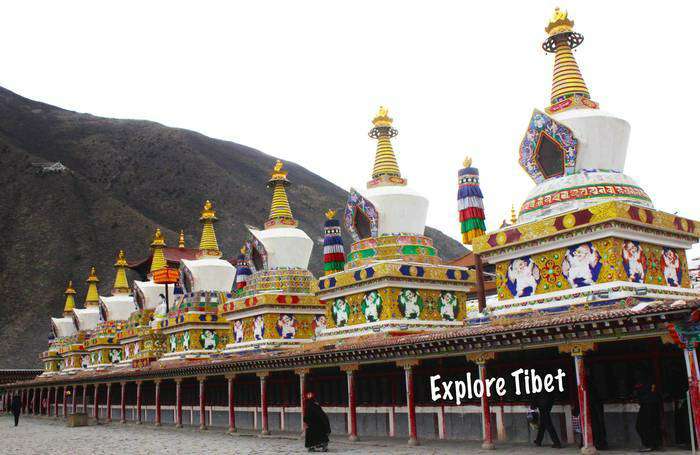
There are commonly two kinds of Mani mounds: one is piled by rocks of different sizes and the other is characterized by blocks and pebbles carved with inscriptions and sculptures, which are up built in an undulating line. After earthquake happened in Yushu in 2010, they arranged those stones piles in a proper way as these days they made some partitions and one can easily go inside through those piles of stones. At south and north part of the temple, there are few stupas above the Mani stones and at below there are many prayer wheels. The local people and the Jegu monastery looking after the maintenance of the compound. At night, the whole Gyanak Mani temple compound is light up with different colours of light including those stupas. There are around hundred payer wheels on the east side of the temple. During special religious occasion days many people to prostration around the whole compound. According to the Buddhist doctrine, these whole temple compound should be walked or circumvented from the left side, the clockwise direction in which the earth and universe revolve.
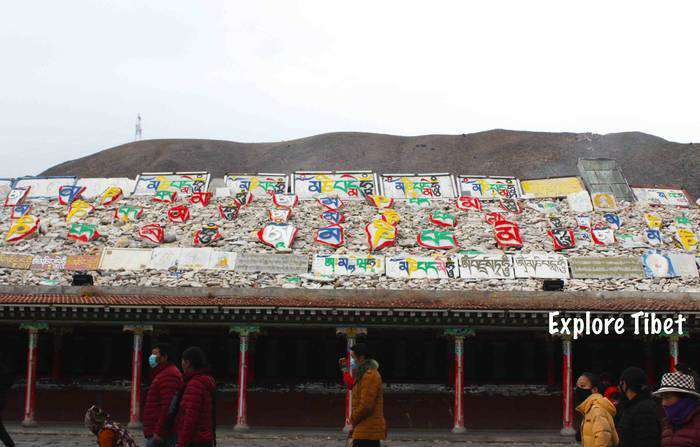
This place is one of most famous in Yushu County where there are so many people visiting pilgrim from different parts of Tibetan regions. In the month of January every year, the monastery hosts the Sakya Monlam Chenmo at Gyanak Mani temple which is the grand prayer for the world peace. During that time thousands of Tibetan comes to be apart of the grand pray from all around the Yushu county.
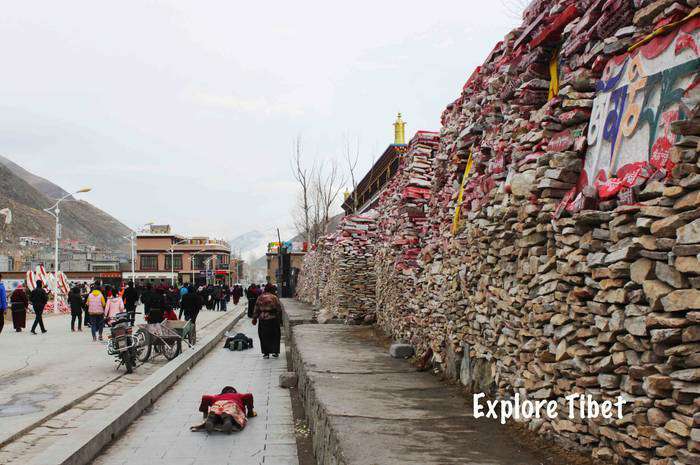
It is a week-long praying festival and at the end of the day, they blow a white shell from the roof the temple which is a symbol of the conclusion of the grand prayer. For the tourist, the best visiting time is in summer and beginning of the autumn season. The roads are very comfortable and as it is not far from the Yushu city. The pilgrims from across the Tibetan region pay a visit to the temple and circumvented around the stone piles.
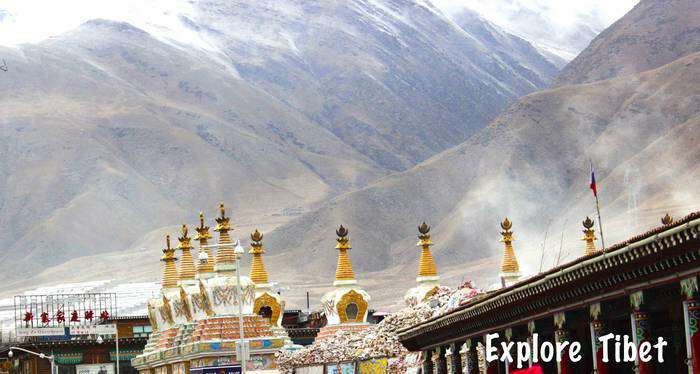
Explore Tibet is an local Tibetan tour company that provides all types of Tibet tours throughout the Tibetan plateau and know the region as our home, if you have any questions for your travel to Tibet or need information on particular places in Tibet, please feel free to write us at [email protected] and we are happy to guide you into our culture and beautiful landscapes.

